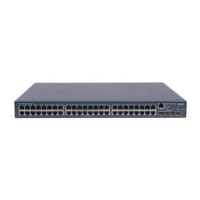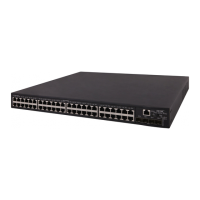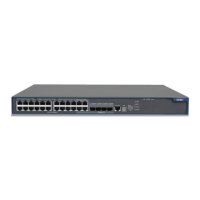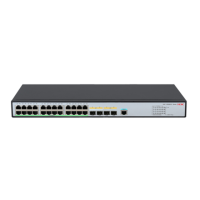4-6
To do… Use the command… Remarks
Configure the
padding format for
Option 82
dhcp-snooping
information format
{ normal | verbose
[ node-identifier { mac |
sysname | user-defined
node-identifier } ] }
Optional
normal by default.
Configure the code
type for the circuit ID
sub-option
dhcp-snooping
information circuit-id
format-type { ascii | hex }
Optional
By default, the code type
depends on the padding
format of Option 82. Each
field has its own code
type.
This code type
configuration applies to
non-user-defined Option
82 only.
Configure
non-user-defined
Option 82
Configure the code
type for the remote
ID sub-option
dhcp-snooping
information remote-id
format-type { ascii | hex }
Optional
hex by default.
The code type
configuration applies to
non-user-defined Option
82 only.
Configure the
padding content for
the circuit ID
sub-option
dhcp-snooping
information [ vlan vlan-id ]
circuit-id string circuit-id
Optional
By default, the padding
content depends on the
padding format of Option
82.
Configure
user-defined
Option 82
Configure the
padding content for
the remote ID
sub-option
dhcp-snooping
information [ vlan vlan-id ]
remote-id string
{ remote-id | sysname }
Optional
By default, the padding
content depends on the
padding format of Option
82.
z You can enable DHCP snooping to support Option 82 on Layer 2 Ethernet interfaces only.
z To support Option 82, it is required to perform related configuration on both the DHCP server and
the device enabled with DHCP snooping.
z If the handling strategy of the DHCP-snooping-enabled device is configured as replace, you need
to configure a padding format for Option 82. If the handling strategy is keep or drop, you need not
configure any padding format.
z If the Option 82 is padded with the device name (sysname) of a node, the device name must
contain no spaces. Otherwise, the DHCP-snooping-enabled device will drop the message.

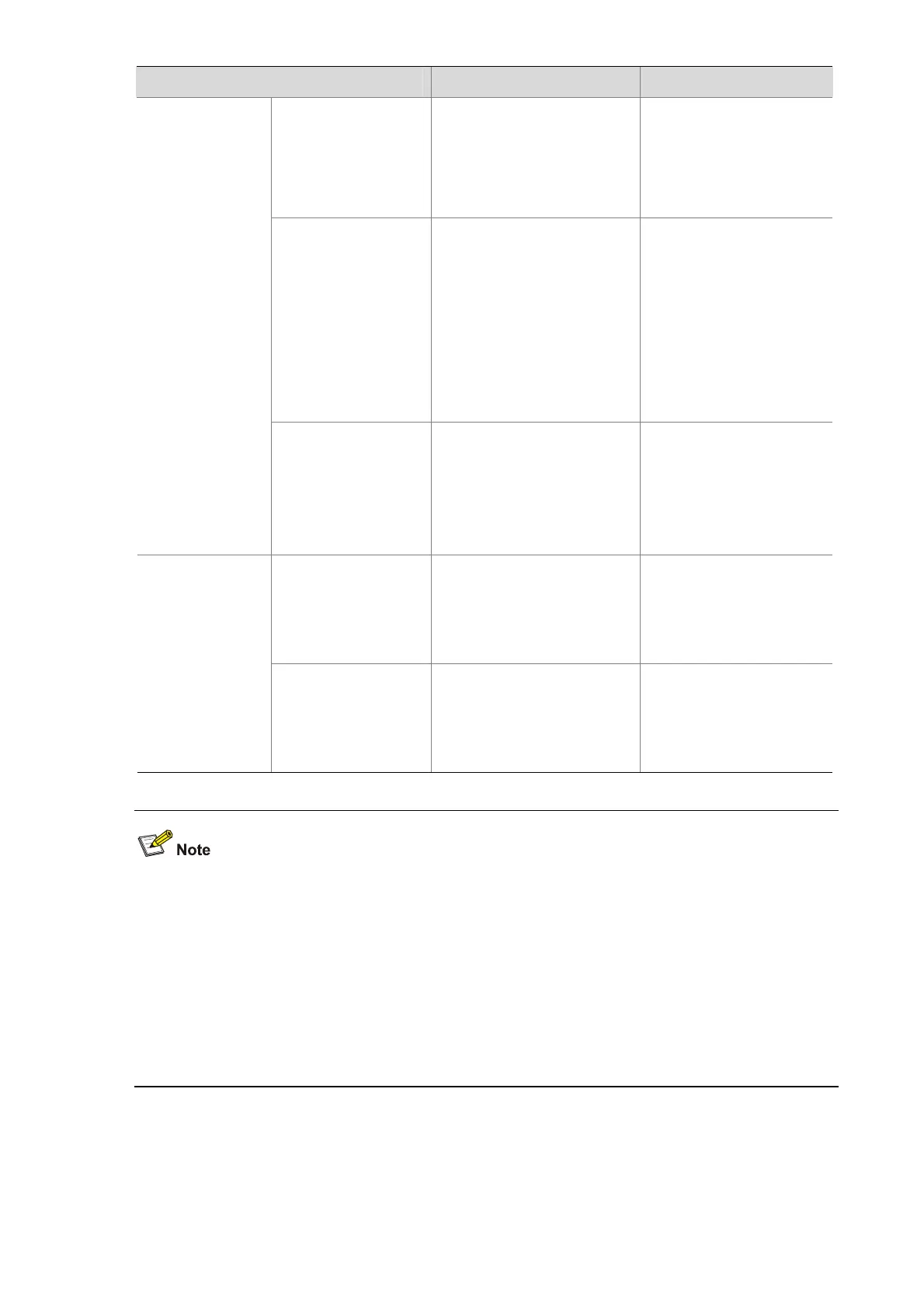